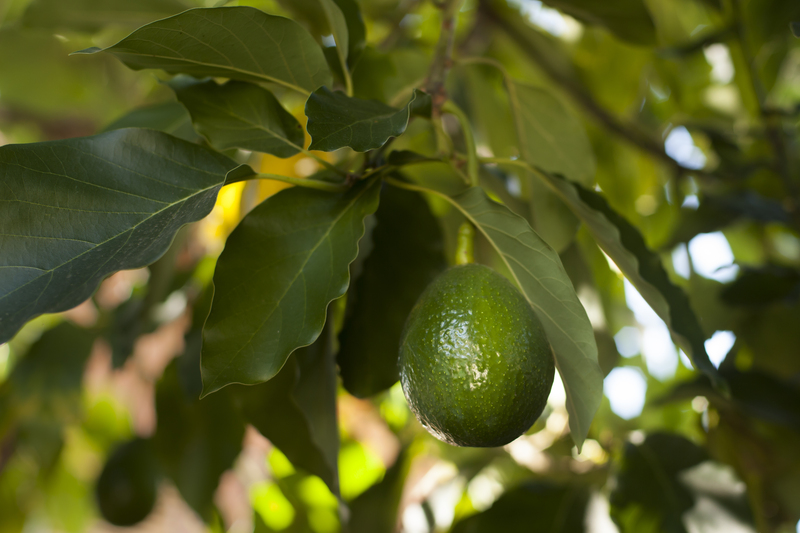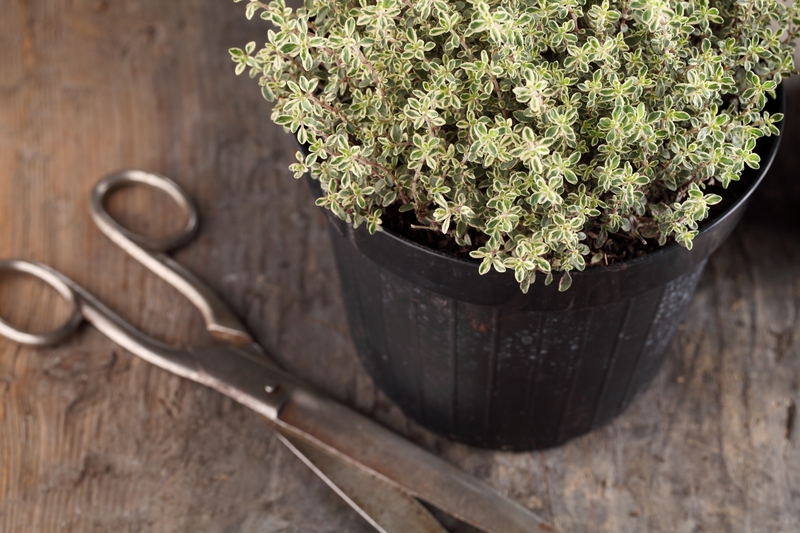Strategies for a Dog-Proof Garden
Posted on 24/05/2025
Strategies for a Dog-Proof Garden: Keep Your Outdoor Space Safe & Beautiful
A beautifully landscaped garden is a delight to both the eyes and the soul. However, pet owners know all too well the challenges that come with maintaining a garden that is safe for dogs but also free from their sometimes-destructive antics. Whether you have a playful puppy or a curious older pooch, finding effective dog-proof garden strategies is essential for protecting both your plants and your furry friend. In this comprehensive guide, we'll explore proven, Google-friendly methods and expert tips to help you grow a flourishing and dog-resistant garden.
Why Do You Need a Dog-Proof Garden?
Understanding the reasons behind your dog's behavior in the garden is the first step to finding lasting solutions. Dogs dig, chew, and trample in gardens for a multitude of reasons, including:
- Curiosity about new scents and textures
- Desire to hunt burrowing critters or insects
- Natural instinct to dig or mark their territory
- Boredom and lack of stimulation
- Seeking cooler earth or shade
Preventing your canine companion from damaging your outdoor oasis requires a holistic plan that addresses both landscaping and the behavioral needs of your pet.

Top Strategies for Creating a Dog-Proof Garden
1. Designate Dog-Friendly Zones
One of the most effective dog garden protection strategies is to provide your pet with their own space. By designating a dedicated area where your dog is free to run, dig, and play, you can help curb destructive instincts elsewhere in your garden.
- Set up a dog run: Use fencing or borders to designate an area just for your dog. This can be filled with sand or wood chips to encourage digging and play.
- Sandpit or digging pit: Train your dog to use a specific spot for digging by burying toys or treats there.
- Shaded rest spot: Create a cool, comfortable retreat using doghouses, teepees, or even a simple canopy of shade for summer relaxation.
2. Install Dog-Proof Fencing & Borders
Physical barriers are key to a dog-friendly garden layout. Choosing the right boundaries can prevent trampling, digging, and escaping.
- Reinforced fences: Opt for fences at least 4-6 feet tall (higher for larger breeds) and without gaps at the bottom.
- Digging deterrents: Line the base of fences with chicken wire or large rocks to deter digging under.
- Soft garden edging: Install flexible rubber or recycled plastic edging to direct dogs away from delicate flower beds.
- Low ornamental fences: Use decorative metal or wood fencing to keep curious noses out of specific areas.
3. Choose Dog-Friendly Garden Plants
Many common garden plants can be toxic to pets, while others are simply too delicate to withstand playful paws. Plant selection is fundamental to a thriving, dog-safe garden.
- Dog-safe plants: Opt for sturdy ground covers such as elbow plant (Zoysia grass), Marigolds, Sunflowers, and Rosemary.
- Potently poisonous plants to avoid: Ditch Oleander, Lilies, Azaleas, Daffodils, and Foxglove, as these are highly toxic to dogs.
- Protect vulnerable plants: Use raised beds or pots for fragile flowers or vegetables.
4. Use Mulch & Groundcover Wisely
Proper groundcover reduces wear and tear, prevents mud after rain, and discourages digging.
- Opt for cedar or pine bark mulch: These are less likely to be chewed than cocoa mulch, which is toxic for dogs.
- Pea gravel or small river rocks: These provide a durable surface for paths and play areas, but make sure they're large enough not to be swallowed.
- Creeping thyme or clover: Low-growing, robust ground covers that can handle some foot traffic and are non-toxic to pets.
5. Dog-Proof Water Features
From ponds to fountains, water features add tranquility to gardens but can be hazardous to pets if not planned well.
- Secure pond covers: Use mesh or grates over ponds to prevent accidental falls.
- Shallow birdbaths: Choose dog-safe, sturdy baths that won't tip over or pose a drowning risk.
- Clean water supply: Ensure fresh, clean water is always available for your dog so they're not tempted to drink from potentially unsafe sources.
6. Protect Your Vegetable Patch
Home-grown vegetables can be irresistible to both you and your pet. Protecting your patch is vital if you want to enjoy your harvest.
- Raised garden beds: Place vegetables out of easy reach of your dog.
- Mesh covers or netting: Drape lightweight mesh over young seedlings or entire beds during the most vulnerable stages of growth.
- Smell deterrents: Place aromatic herbs like mint or rosemary around your veggie beds, as their strong scents can confuse your dog's nose.
7. Train and Redirect Your Dog
No garden improvement is complete without a commitment to ongoing dog training. With consistency and positive reinforcement, you can redirect unwanted garden behaviors.
- 'Leave It' command: Teach your dog to resist the urge to dig or chew on non-approved areas.
- Reward good behavior: Use treats, praise, or playtime when your dog avoids off-limits zones.
- Supervised garden time: Especially for young or new dogs, spend time outside to intervene and redirect as needed.
8. Garden Decor & Furniture: Make it Pet-Proof
Dog-resistant furniture and smart decor choices can enhance your garden's appearance and longevity.
- Robust outdoor furniture: Metal or heavy-duty plastic items withstand chewing and scratching much better than wicker or lightweight wood.
- Secure ornaments and pots: Heavier items are less likely to be knocked over during zoomies or play sessions.
- Avoid sharp or breakable items: Steer clear of glass, ceramic, or anything with sharp edges that could injure a rambunctious pet.
Bonus Tips: Additional Ways To Dog-Proof Your Yard
In addition to the main strategies above, consider these extra tips for making your garden fully dog-proof:
- Limit access during sensitive times: Use temporary fencing or barriers during planting seasons or when treating the lawn with non-pet-safe fertilizers.
- Choose non-toxic weed & pest controls: Always select organic or pet-safe solutions. Avoid slug pellets, insecticides, and herbicides that are toxic to animals.
- Secure your compost: Compost heaps can attract curious canines. Keep them covered or fenced off to prevent snacking or digging.
- Provide toys and distractions: Regularly rotate durable toys and puzzle feeders outdoors to occupy your dog's mind -- a busy dog is a happy dog!
Common Mistakes To Avoid in Dog-Proof Garden Design
Even the most dedicated pet parents make slip-ups when designing their outdoor space. Here's what to watch out for:
- Not researching plant toxicity: Even common houseplants and flowers can be highly dangerous to dogs.
- Ignoring local wildlife: Unprotected gardens may invite critters like hedgehogs or snakes that could pose a risk to your dog as well as your plants.
- Forgetting about escape routes: Gaps under fences and unsecured gates are prime opportunities for clever dogs to roam next door or into the street.
- Using unsuitable mulches: Cocoa mulch, for example, smells good but is lethal for dogs if ingested.
- Neglecting the weather: Ensure pups always have access to shade, especially in summer, and shelter during bad weather.
Quick Reference: Dog-Safe vs. Dangerous Plants
Dog-Friendly Plants
- Sunflowers
- Roses (thornless varieties)
- Snapdragons
- Camellias
- Lavender
- Basil, Sage, Thyme, and Parsley
- Marigolds
Plants to Avoid in Dog Gardens
- Oleander
- Azalea
- Sago Palm
- Lily of the Valley
- Foxglove
- Tulips and Daffodils
- Autumn Crocus

Frequently Asked Questions About Dog-Proofing Gardens
How can I stop my dog from digging?
Provide a designated digging area, use aromatic deterrents like citrus peels, and block off favorite spots with rocks or barriers. Regular exercise and interactive toys can drastically reduce digging urges.
Are all mulches safe for dogs?
No, avoid cocoa mulch (toxic), and opt for pine bark, cedar mulch, or pea gravel. Always watch for signs of chewing or eating mulch and consider larger pieces that can't be swallowed.
What physical barriers work best for dogs?
A sturdy fence at least four feet high, with no gaps at ground level, is ideal. For garden beds, use low decorative fences, chicken wire beneath the soil, and raised planters.
How can I repair lawn damage from dogs?
Reseed bald patches with robust, fast-growing grass species, keep dog urine diluted (train your dog or encourage hydration), and rotate potty spots throughout the garden.
Conclusion: Enjoy a Peaceful, Dog-Proof Paradise
A dog-proof garden allows you and your pet to relax, exercise, and enjoy nature together. Imitating nature with strong plants, practical fencing, safe ground covers, and consistent training, you can minimize damage and create an environment that's both aesthetically pleasing and comfortable for your furry family member. Careful planning and ongoing management will ensure that both your garden and your dog thrive for years to come.
For more expert tips on dog-friendly gardens and pet-safe landscaping, keep exploring our blog or consult your local gardening center -- your best canine-and-garden adventures await!

